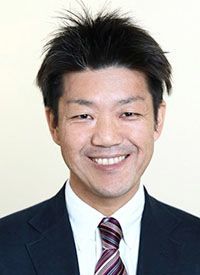Concurrent Cladribine/Rituximab Enhances MRD-Free Complete Responses in Hairy Cell Leukemia
Concurrent frontline therapy with cladribine and rituximab led to a significant improvement in minimal residual disease–free complete responses versus cladribine followed by delayed rituximab in patients with hairy cell leukemia.
Dai Chihara, MD, PhD, National Cancer Institute

Dai Chihara, MD, PhD
Concurrent frontline therapy with cladribine and rituximab (Rituxan) led to a significant improvement in minimal residual disease (MRD)—free complete responses (CRs) versus cladribine followed by delayed rituximab in patients with hairy cell leukemia (HCL), according to results from a phase 2 study published in the Journal of Clinical Oncology.
At 6 months, the MRD-free CR rates were 97% (n = 33) with cladribine/rituximab versus 24% (n = 8) with cladribine alone (P <.0001). The CR rates were 100% with cladribine/rituximab versus 88% with cladribine alone (P = .11), and the MRD-free rates in the blood were 100% and 50% with cladribine/rituximab and rituximab alone, respectively (P <.0001).
At a median follow-up of 96 months, 94% of patients in the cladribine/rituximab arm were MRD-free versus 47% in the cladribine-alone arm.
Additionally, delayed rituximab after frontline cladribine led to a lower rate of durable MRD-free CRs compared with concurrent cladribine/rituximab at 67% versus 97%, respectively (P = .0034). Twenty-nine percent of delayed MRD-free patients had an MRD relapse at a median follow-up of 65.5 months following MRD-free CR. This led to shorter durability of MRD free after delayed rituximab versus after concurrent rituximab (HR, 0.094; P = .0081).
"We found that cladribine/rituximab was superior to cladribine monotherapy with respect to the rate and durability of MRD-free CR," lead study author, Dai Chihara, MD, PhD, of the National Cancer Institute, and co-investigators wrote. "MRD-free CR could usually be achieved by delayed rituximab, although the rates and durability of MRD-free CR were less and shorter than those achievable by cladribine/rituximab."
Eligible patients had a diagnosis of HCL, were purine analog and rituximab-naïve, and needed treatment due to cytopenias (neutrophils <1 x 109/L, hemoglobin, <10 g/dL, or platelet <100 x 106/L), lymphocytosis >5 x 109/L, symptomatic splenomegaly, or recurrent infections. Patients with severe cytopenias and those receiving treatment for infections were still eligible for enrollment.
Patients in the trial were randomized to receive 0.15 mg/kg of intravenous cladribine on days 1 through 5 and 8 weekly doses of 375 mg/m2 of rituximab on day 1 (n = 34) or at least 6 months after detection of MRD in the blood (n = 34).
Patients had a median age of 48 years (range, 29-77). The majority of patients had baseline neutropenia (median, 0.81 x 109/L) and thrombocytopenia (median, 69 x 109/L).
Patients in the concurrent cladribine/rituximab arm had lower baseline hemoglobin (P = .037) but were otherwise well balanced between arms.
MRD tests included bone marrow immunohistochemistry and blood and bone marrow aspirate flow cytometry.
At 4 weeks, 62% of patients in the concurrent cladribine/rituximab arm achieved MRD negativity versus 9% in the delayed rituximab arm (P <.0001). At 6 months, all but 1 patient in the concurrent arm achieved an MRD-free CR. The patient had classic and variant phenotypic HCL cells in the bone marrow aspirate at 1 and 6 months, and only classic HCL at 1.5 years.
Of the 34 patients who received cladribine/rituximab and 20 who received delayed rituximab and became MRD-free in the blood, the median duration of MRD-free status was longer with concurrent treatment versus cladribine followed by delayed rituximab (unreached versus 78.7 months, respectively; HR, 0.053; 95% CI, 0.007-0.42; P = .0001).
In the delayed-rituximab arm, prior to starting rituximab, 1 patient achieved CR at 1.5 years, 4 tested negative with blood flow cytometry at 7, 9, 7, and 10 months, and 3 patients achieved MRD-free CR at 54, 18, and 18 months.
Twenty-four patients in the cladribine-alone arm went on to receive delayed rituximab due to persistent MRD in the blood. Of 21 evaluable patients in the delayed arm, 14 (67%) became MRD free, which was significantly less than the 33 patients who maintained MRD-free status after concurrent cladribine/rituximab (P = .0034).
Of 6 patients in the delayed rituximab arm who received a second course of delayed rituximab, 6 achieved MRD-free status, 2 of which remain MRD free. At a median follow-up of 71.3 months, 12 patients in the delayed arm remain MRD free.
The MRD-free survival has yet to be reached in the cladribine/rituximab arm versus 72 months in the delayed-rituximab arm (HR, 0.038; 95% CI, 0.005-0.31; P <.0001).
In terms of safety, most nonhematologic toxicity was grade 1/2. Regarding hematologic toxicity, concurrent cladribine/rituximab led to transient grade 3/4 thrombocytopenia (59% vs 9%; P <.0001) and platelet transfusions without bleeding (35% vs 0%; P = .0002) compared with delayed rituximab, and higher neutrophil (P = .017) and platelet counts (P = .0015) at 4 weeks.
"Although cladribine/rituximab proved superior to cladribine and delayed rituximab in eradicating MRD, it is notable that many patients in the delayed group became MRD free. Thus, if one received cladribine monotherapy and has MRD by blood flow cytometry, delayed rituximab is an option supported by this trial with the goal to become MRD free," Chihara and co-investigators concluded.
Chihara D, Arons E, Stetler-Stevenson M, et al. Randomized phase II study of first-line cladribine with concurrent or delayed rituximab in patients with hairy cell leukemia. J Clin Oncol. 2020;38(14):1527-1538. doi:10.1200/JCO.19.02250